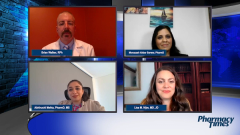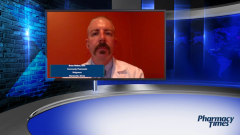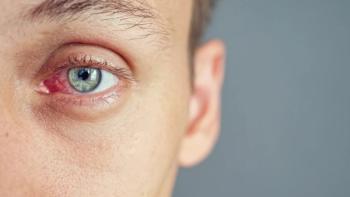
When to Seek Professional Help for DED
A panel of pharmacists and doctors explain when a patient should seek professional help for dry eye disease.
Episodes in this series

Abhiruchi Mehta, PharmD, MS: At what point would you recommend that patients go see a physician? What are some of the red flags they need to pay attention to? Brian?
Brian Walker, RPh: Eye pain and crusting of the eye. The other one that I thankfully don’t see much is new floaters, or like a spider web or curtain vision. Some people have that and say, “Oh, I think that my eyes are dry,” when in reality, their retina is becoming detached, and they need to be seen immediately. Those are things you would want to rule out first, and you are going to want to ask those questions like, “Have you been using this?” They say, “No, I’ve been using this,” or “I went from this to something else that’s maybe a little thicker, and I’m still not getting the relief that I want.” That’s when your dry eye disease is progressing to a point where you want to be seen by a doctor to possibly get a prescription medicine.
Since every case is different, how long should someone be on a particular eye drop? That’s hard to say. I wouldn’t say, “Well, try it for a week, and if it’s not working, then immediately go see a doctor,” but I would say give it a couple of weeks to try some over-the-counter products first—especially if you know it’s dry eye disease—as you wade through the myriad of choices. If someone is having problems, though, you don’t want to underestimate the patient’s lack of commitment to a single therapy. A lot of times, people are noncompliant—where they bought something and decided not to use it—or they keep it in their car and only use it periodically, and then they say, “I heard this commercial, and I want to try this. What do you think is for me?” I would say, if you’ve been doing what you should (eg, 2 to 4 drops a day of the over-the-counter tears or the TheraTears products), and you’re still having those problems or your symptoms are not improving—if they’re getting worse, or there are any other symptoms you’re getting—then you’re going to need a comprehensive eye examination by a doctor.
Lisa M. Nijm, MD, JD: I’m going to interject here about what happens from the physician side when patients come in and also make a plea to the pharmacy community to help us more on this angle. What often happens and what the data show is that patients have tried 3 or more artificial tears before they come in to seek medical care from a physician. The unfortunate thing is that they’ve been suffering throughout this time. I use artificial tears all the time; I’m a huge fan, especially of the preservative-free ones because I see so many patients with cornea issues who have dry eyes and have other comorbid conditions that are affected by preservatives. However, artificial tears are only a limited relief. They’re not medications. It’s merely to apply temporary additional moisture to the eye. For some mild forms, that can be great. They can use it 2 to 4 times a day and be fine; they won’t experience more problems.
Transcript edited for clarity.
Newsletter
Stay informed on drug updates, treatment guidelines, and pharmacy practice trends—subscribe to Pharmacy Times for weekly clinical insights.



















































































































































































































